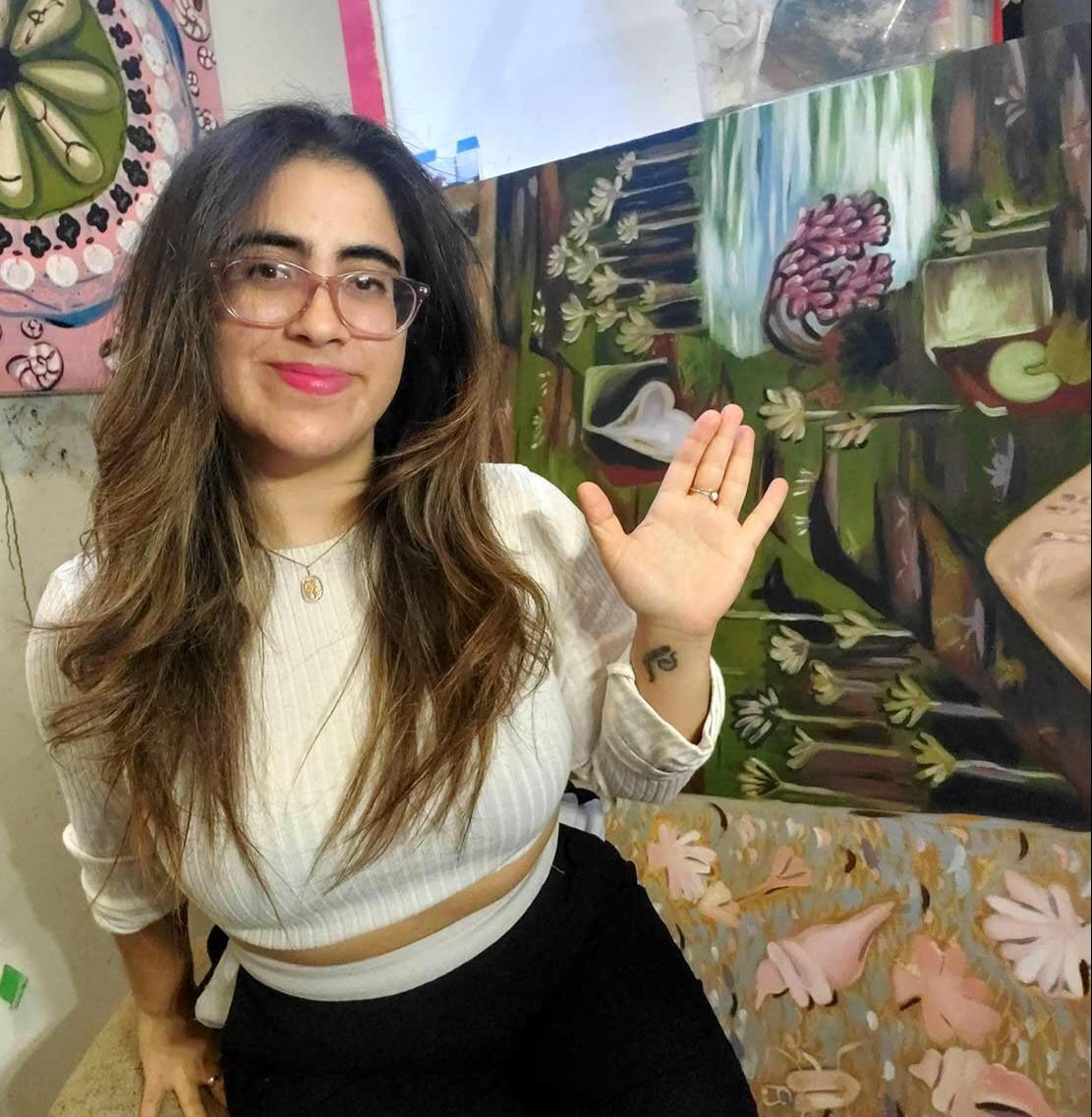In the Studio with Amanda Boulos
INTERVIEW
Published Nov 13, 2020
You have mentioned that you come from a Palestinian and Lebanese background, and how it is an integral part of your art practice. Would you mind discussing how you came about choosing art as a tool to communicate aspects of your upbringing?
There are many reasons why my practice stems from my Palestinian background, my family relationships and my family’s stories growing up in Lebanon.
The first reason is that I am very much invested in my family. They take up a lot of space in my life both physically and mentally.
The second reason is that growing up in Canada and going to art school, I had the impression that it was uncool to work with your family and their stories—the work needed to be universal, academic and independently yours (and definitely not attached to your mother’s bosom!). Nevertheless, I believed that you can be a serious artist and make extremely important and meaningful work in relation to family, so I rebelled.
The third reason is that my family holds with them a rich unspoken and suppressed history, which is still very difficult to untangle and understand. Growing up, I didn’t really know who I was because of how complicated it is being Palestinian, and the only place for me to express this confusion was through writing and making. I ditched my serious writing practice back in high school, but art making stuck! My work has shifted throughout the years, but it has always been influenced by my identity and upbringing.
Growing up in the Greater Toronto Area, you were surrounded by family and friends that were part of your cultural community. You are also part of the art world in Toronto, which is a community of its own. How have these two very different communities influenced who you are today as an artist?
I’m one of these annoying humans who need a lot of love to function (yes, I’m a Pisces). My partner is exhausted, but my family happily supplies it, and in both the Toronto art world and the GTA’s Arab community there are pockets of gushing love that I feel lucky to have. If it weren’t for these communities’ generosity and support I would not have pursued an art career the way I have. Yes, both communities have difficult moments too—the art world can be spicy at times, and the Arab community’s endless fights get to be exhausting—but what is an art career without its challenges?
There is something really wonderful about living in a diaspora: we always have access to the best secret restaurants, niche fashion, and a second language. Growing up living between two lives is difficult, but also sobering. The ability to see one culture against another definitely magnifies life. It influences my practice and supplies me with endless content that I can admire, question and learn from.
Your paintings have surreal qualities, and often feel like fragments of dreams or stories. How do you want the viewers to read the narratives that you are portraying in each work?
Each of my paintings borrows from a series of oral stories, visual sources, histories and even places, which are then translated into Frankenstein-like images. There is no one way I want the images to be read—a viewer can solely look for what they connect with; they can identify the histories and symbols and relate them to Palestine, Lebanon or the diaspora experience; or they can read the paintings with their own knowledge of art history and theory. The ambiguity of the pieces is the most exciting aspect of the work for me. I know the stories I want to tell, but I don’t want to just retell them in a different medium. I want to know what else the stories have to say.
Recently I have been attaching mini-narratives (if you can call them that) to each of the paintings on my Instagram account, explaining briefly where each image starts and what they evoke for me. I use these short texts to further push some of the narrative and ideas I really want to share. You can visit my Instagram page to read them here.
In addition to painting, you also work with video. Your video work is more overtly personal and direct than your paintings, using found video footage and splicing it together. Working between the two mediums, how do you choose what medium can better convey the story you are trying to tell?
Painting is definitely the medium I’m most comfortable working with, and it is the work I tend to show publicly most often. And although my video works seem more direct and personal, I tend to think of them as being much more abstract than the paintings. The paintings engage with stories, places and histories with intense investment. Meanwhile, the videos for me are an exploration of how an artwork can elicit a reaction. Some videos confuse and disorient the viewer, while other videos try to startle the viewer with things like jump scares.
Do you have any projects that you are working on in the future that you are excited about and can share?
Can you imagine if I said no? YES, and too many at that! I’m currently working on a series of paintings based off a family story about smuggling five gold coins across Palestine. This series will be shown in Calgary with sculptor extraordinaire Shannon Garden-Smith. I’m also slowly working on a series of Sasquatch drawings inspired by the mountains in both Beirut, Lebanon and Banff, Canada. Meanwhile, I continue to push against other creeping projects that deviously present themselves to me.





